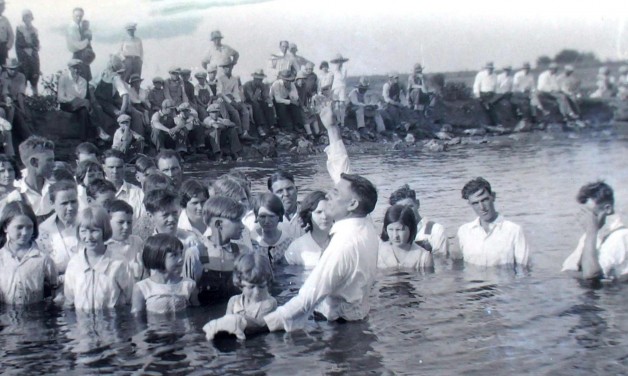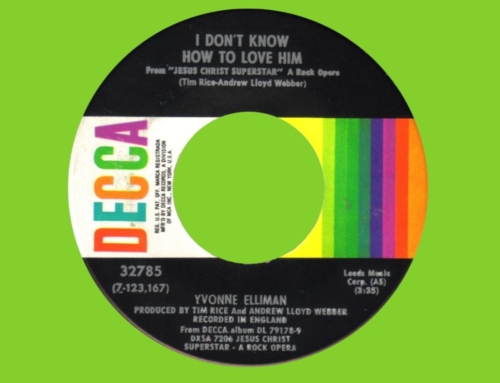When I arrived at the Dominican novitiate, one of the older priests in the community preached a challenging homily: despite our large class of 21 young men aiming to join the Order of Preachers, so many more people our age are leaving the Church and abandoning any semblance of religion altogether, as the Western civilization which the Church herself built up becomes ever more secular. A tell-tale sign of this phenomenon is the trend among many atheists who were raised in the Christian faith to obtain “Certificates of De-Baptism.”
Claiming that they were forced into a liturgical rite “before the age of consent,” tens of thousands of Americans, Britons, and Western Europeans renounce the faith of their upbringing and cultural patrimony, aiming to undo their initiation into the Church and negate their baptismal certificate with another official document—which you can get from the Web sites of certain secularist organizations for the low, low price of only $5. Some have even gone as far as to request to be removed from their native parishes’ baptismal registries. Yet this business deal—which looks surprisingly like an act of organized religion—raises the question: Do these de-baptismal certificates actually do anything?
To answer this, we can examine the nature of the sacrament of Baptism. The Church’s Code of Canon Law describes it (CIC 849): “Through Baptism men and women are freed from sin, are reborn as children of God, and, configured to Christ by an indelible character, are incorporated into the Church.” This ritual of initiation is thus not only a washing of the body, but a cleansing of the soul that raises people into a relationship with the Divine. Yet those who wish to leave this relationship, holding that the ideas of original sin and damnation are repulsive, still face the reality of the “indelible character” of Baptism.
The term “character” has taken on many uses these days: from a letter of text, to a costumed cast member at a Disney park, to the eccentric guy at the coffee shop. But here it means an invisible mark on the soul of a baptized person. This mark is the reality and sign of Baptism, or in medieval scholastic terms, the res et sacramentum. Each of the Church’s sacraments has an abiding reality that remains when the visible rite is finished, a reality that points to a greater mystery: thus, the Real Presence of Christ remains in the Blessed Sacrament after the Mass has ended and the people have gone in peace; the bond of marriage remains even if the husband and wife no longer live together; and the baptismal mark remains even on the soul of one who bought a de-baptismal certificate.
Along with Confirmation and Holy Orders, Baptism imprints on the soul of the person who receives it a character, which, as St. Thomas Aquinas explains, “signifies a certain spiritual power ordained unto things pertaining to the Divine worship” (ST III.63.3). As the first act of initiation into the Church, Baptism equips us for participating in God’s life, through the Church’s worship; this life is everlasting, and so is the power that brings us into it. Thus even if some people decide not to use this ability to worship God through the eternal priesthood of Jesus Christ, the fact remains that they still can. Any attempt to change the fact that one’s baptism happened, through trying to remove oneself from a baptismal register, is as futile as denying a historical event: just as having a football team vacate a win does not change the fact that people made money (or were injured) as a result of the game, for example.
Of course, original sin and damnation are repulsive. That is precisely what Baptism liberates us from: it conforms us to the greater mystery of the saving death and resurrection of Jesus, and removes the obstacles that prevent us from living out the fellowship for which God that we were born to live, in the freedom of the children of God (Romans 8:14ff.). Far from an act of coercion, what could be better than to start this life, which continues into eternity, from as early an age as possible?
Most importantly, the permanence of baptismal character means that the certificate of de-baptism, which marks a person’s public repudiation of Christianity, is not binding; rather, one who rejects the Christian faith is free to return to the divine fellowship without having to be baptized again. Saint Augustine illustrates this with an analogy to the Roman military, which branded its soldiers for identification:
If a deserter from the battle, through dread of the mark of enlistment on his body, throws himself on the emperor’s clemency, and having besought and received mercy, return to the fight; is that character renewed, when the man has been set free and reprimanded? Is it not rather acknowledged and approved? Are the Christian sacraments, by any chance, of a nature less lasting than this bodily mark?
Thus, while many attempt to negate the fact that they have ever been initiated into the Church, the sacramental character—a gift that lasts forever—reminds us all of this Good News, entrusted to a new generation of preachers in this time of the New Evangelization: No matter how far one has drifted away from the Christian faith, it is not too late to come back.
✠
Photo Credit: Jeffery Scism, The Great Texola Oklahoma Revival 1927







